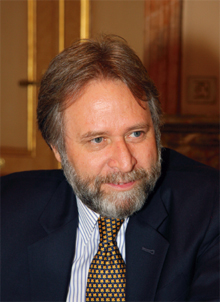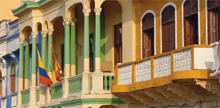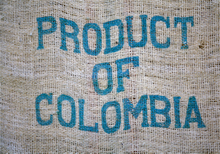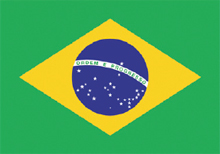Jorge Noguera Arias: Gerente General de MAPFRE RE en BogotáMARKETS
Born in Bogotá, province of Cundinamarca, Colombia on 8th January 1949.
In 1972 he completed the university career he chose by vocation, with a degree in Jurisprudence, from the Colegio Mayor Nuestra Señora del Rosario, founded in 1653 and in 1973 worked for a year as an assistant in the Insurance and Claims Department in the Greater Colombia Merchant Fleet, which operated between Venezuela, Colombia and Ecuador. The following year, he completed his thesis “Studies on bills of lading”. In reality, a maritime insurance policy.
In 1975 he joined the Legal Department of the Nacional de Seguros, where within a short time he was appointed Head of the Transport Insurance Department.
In the 80s he worked for Seguros Colombia and as Head of Reinsurance for Seguros Bolívar. In 1991 he was appointed Technical and Commercial Vice-President of Reaseguradora Hemisférica, a company acquired by MAPFRE RE in the same year. In 1996 he moved to Brazil to work in the offices of MAPFRE RE, returning to Colombia in 2000 as Managing Director.
In 2009 Jorge celebrates 34 years working in the insurance and reinsurance markets.
"The Colombian insurance market has matured a lot over the last few years, although there is still some way to go"
After having worked for various insurance companies
in Colombia, how do you see the direct
insurance market in your country? Do you think
it has reached maturity?
Undoubtedly we have a long way to go, but it has
matured significantly over the last decade. The
Colombian market has followed a process of
concentration. We have reduced from 36 to 27
insurance companies, mainly by means of mergers
and closures. Asevalle merged with Bolívar.
Liberty is the result of the merger of Skandia,
Colmena, Latinoamericana and ABN. The former
Inmobiliaria de Seguros, specialising in selling
lease insurance, is now a department of Seguros
Bolívar. And although there have always been
foreign insurance companies in Colombia, they
were not very large, because they concentrated
on a few very specific market niches. Chubb has
been in Colombia since 1959, AIG since 1950
and Royal since 1937.
What are the main market events and regional
conferences which provide an opportunity to
meet with other players?
Before answering this very formal question, I
would like to comment on a very informal annual
meeting. We have an “Association of Former
Executives of Seguros Bolívar” of the 80s. We
meet on the last Friday of November every year,
when, in addition to seeing friends, we do business,
listen to music and enjoy a good meal.
With regard to business events, there is an annual
meeting of Fasecolda, which takes place in the beautiful city of Cartagena de Indias on
two different dates, depending on whether it is
an odd or even year, or to put it another way,
whether or not there is a FIDES (Inter-American
Federation of Insurance Companies) event. Traditionally,
Fasecolda routinely meets in October
or November and in May in years when there is
a FIDES meeting.
Can we also talk about insurance globalisation
in Latin America, like in Europe? What major
groups are there?
There are several of these groups in Colombia:
Allianz, ACE, Generali, Liberty, MAPFRE, Royal,
although Zurich, for example, is not there. But
there is a fully globalised market. I would say
that in Colombia, foreign premiums in December
2008 accounted for 45% of the Colombian
market.
Do the people who work in the new insurance
companies receive training in a special school
or do they receive generic training when they
work in an insurance company?
Both, I think, although the vast majority end up
as professionals on the basis of generic training.
There are formal schools such as the Politécnico
Gran Colombiano which has an insurance faculty.
Many people acquire experience on the job and
are trained in various companies. In Colombia,
Bolívar and Suramericana have the longest standing
tradition.
What do you think of rating agencies?
In 1991, when I was with Reaseguradora Hemisférica,
there were no such determining players
in the financial or insurance markets. After the
problems encountered in 1993, 1994 and 1995,
with the drama repeating itself in 2001 and 2002,
when there were those slumps or problems in
industry and the financial sector in general, the
rating agencies always took on more importance
because they told the public which were the
most solvent, although at the same time they
highlighted errors which were committed by
extremely large companies.
What is the position of insurance legislation in
Colombia? How did we get there?
Colombian insurance legislation is advanced.
We have had a tightly run market since 1991,
with free tariffs and products which comply
with the requirements of the Commercial Code.
In earlier times, for a tariff to be approved, it
took one or two years and that was no good at
all. I believe that the current Financial
Superintendent’s Office, which is a merger of
the former Banking Superintendent’s Office
and Securities Superintendent’s Office, is one
of the best insurance regulatory bodies in the
region. Colombian insurance legislation is very
up to date and always takes the most advanced
outside references, such as Solvency II in Europe.
If we take the Latin American region as a
whole, in my opinion Mexico, Chile and Colombia are the most developed countries in terms
of insurance.
The expected earthquake has not yet happened.
There are earthquake models for Colombia.
How do you see this developing?
Undoubtedly with further technical studies being
carried out which state that the earthquake tariff
should be “x” or “y”, if there is reinsurance capacity
and if there is business, the tariff is weakened.
You do not always get what you should. If what
you want to know is whether the technical earthquake
tariff is the right one for Colombia, you will
not get an only answer, because it goes with the
market, hard or soft. Therefore, it will be closer
to the technical level in a hard market and further
away in a soft market.
Does the same hold for industrial risks?
Yes. There is always more reinsurance capacity
in a soft market situation. We have not reached
very low levels in Colombia, because they have
never been below 1 per mille, which in itself is
not very attractive. If we take into account the
fact that in Colombia, we have to quote, not only
the fire risk and risks inherent in fire and technical
branches, but also earthquake and terrorism,
to a greater or lesser extent according to
the position of public order, it is clear that the
rate is clearly inadequate. Today, I would say that terrorism cover has been
relaxed a little from the point of view of price
and excesses, and all because the situation has
improved socially. Guerrillas are more decimated
than five years ago, but they still exist. It is not
that the risk has been eliminated, as has happened
in other countries, but that better control
has been achieved.
Is the life and health branch business in MAPFRE
RE Colombia significant? What legislative
environment has been favourable to its development?
The situation in Colombia, pre 1993, was that of
a social security model with employees being
obliged to contribute to pensions, healthcare
and so-called employment risks. They had to
buy this insurance and when someone is obliged
to do something and when there is also only one
provider, the service is disastrous. The two worst
things come together: a monopoly on the part
of the supplier and an obligation on the part of
the purchaser.
The Senator who put forward the Social Security
Privatisation Law in 1993 is now the President
of the Republic, Álvaro Uribe Vélez. This law was
a very important step forward from the point of
view of insurance and especially services. The
Social Security Privatisation Law opened up
opportunities and Colombia adopted a mixed
model. Chile, which was the most advanced
country in this regard, with the longest history
in privatisation of social security, opted to stop
State social security and create private insurance
companies.
In Colombia, Chileans had considerable influence
in the drafting of the Social Security Privatisation
Law and in the end it was decided to design a
mixed system, in other words Social Insurance
continued to be an operator although other
private competitors arose. Pension funds were
created by the main financial groups: Suramericana
with its so-called “protection” pension
fund, the Sarmiento Group with its “Porvenir”
(future) and other companies which took these
types of initiatives were ING and Skandia, for
example. And the same thing happened in two
other areas of social security, health and employment
risks. In healthcare, there was the Obligatory
Health Plan. Suramericana created
“Susalud”, and there were other companies
offering similar products such as “Colmédica”
and “Colsanitas”, among others. Healthcare
under the Obligatory Health Plan is now of the
highest quality.
Were there also such significant changes in
employment risks?
As a service concept, ARP (Administradoras de
Riesgos Profesionales) (Professional Risk Administrators)
were a revolution and also as a premium
volume concept. Until July 2008, in the
ARP insurance business there were two private
ARP companies and social security was separate.
From July last year social security finished with
ARP, taking on pension business only. This
means that healthcare and ARP business moved
totally into the private market. In specific terms,
the ARP market, which was previously under
social security (25% of the market) was transferred
to a company called La Positiva (previously
Previsora Vida). Against this very favourable
background, Colmena, Suratep, Colpatria, Equidad,
Liberty and MAPFRE now had their own
ARP company.
MAPFRE RE is a reinsurance company in the
ARP branch and we have been extremely active
to the point of becoming leaders in social security
reinsurance in Colombia. We are doing well
thanks to the support of the branch’s Regional
Department and the work we have carried out
since 1993. MAPFRE RE also plays an important
role in healthcare and pensions reinsurance.
What do you want to do with your spare time
once you leave the reinsurance world?
I think there are few people in Colombia as
fortunate as me and who have had as many
opportunities as I have. It is a country where
there is still much work to be done in the field
of social improvement and education. I intend
working through foundations to give back to my
country the opportunities it gave me and in this
way contribute to the general improvement of
society. Why not through the MAPFRE Foundation
which I hold very dear. Finally, I just want to say
that it is very gratifying to reach the beginning
of this last stage of life with such good health,
motivation and affection.






MAPFRE RE has been authorised as a local reinsurance company in Brazil; after your experience with the opening of the IRB (Brazilian Reinsurance Institute) what do you think of the future of the Brazilian market in the short term?
Eleven years elapsed from the announcement of the opening the Brazilian reinsurance market until it became a reality. What happens over the next few years is to a large extent dependent on the active reinsurance companies. Brazilians do not have to be taught what a separate quota policy is nor what commission is, but rather what international reinsurance is. They have to be made aware of the idea of the diversity they have in the reinsurance market in terms of options and prices. It is a market to be in. I believe that we now have to develop this concept of long term partner with the reinsurer.
As reinsurers, we have to digest the size of Brazil. There is going to be a lot of competition, because there are no catastrophes such as hurricanes or earthquakes and on the other hand companies do not need much reinsurance capacity, because they are all extremely large companies at Latin American level. We need to develop a reinsurance culture more than reinsurance information.
It will therefore depend on our active attitude, we have to expect much from the Brazilian market since all reinsurance companies are present in Brazil and have very large and very professional teams which visit the insurance companies frequently. To be on a par with its competitors is undoubtedly a real objective for MAPFRE RE.


